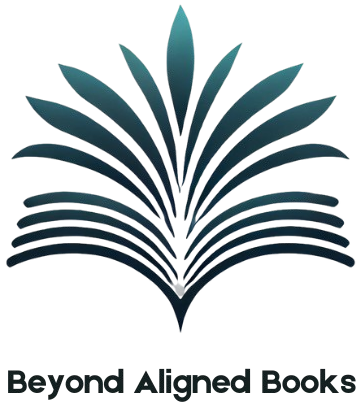The goal is to hire support that propels your business forward—without wasting time and energy on dead ends. But you can’t make a great hire if you’re unclear on what you’re asking for. An RFP changes that by providing you a clear way to evaluate proposals based on your specific needs.
In A Better Way to Hire Help Without Wasting Time or Money, I shared how using a Request for Proposal (RFP) can bring clarity and structure to your hiring process—especially for small business owners who are tired of vague discovery calls and unclear proposals. Instead of hoping someone “gets you” on a call, the RFP invites aligned responses that are easier to evaluate and compare. I used my own search for a marketing strategist to show how the process works in real time.
Now, the proposals are in—and it’s time for the next step: how to evaluate proposals effectively so you can make a confident hiring decision.
Spoiler alert: I found the right strategist, and I couldn’t be more excited.
What Happened When the RFP Went Out
A good RFP doesn’t just invite the right responses—it filters out the wrong ones.
The goal of the RFP was to receive apples-to-apples proposals that aligned with my expectations—and weed out those who weren’t a great fit.
Two people initially expressed interest but later realized they didn’t have the time or the right approach to deliver what I was asking for. They didn’t submit proposals. That’s a win: saved time, no unnecessary calls.
One person sent a DM with a link to a prepackaged coaching plan—clearly not what I was looking for. I asked her to follow the RFP process to keep things fair, but I never heard back. Another win: no wasted discovery call.
Two people submitted full proposals. One stood out as a strong match—understood what I needed, laid out clear goals and deliverables, and came in mid-range of my budget. The second? Less tailored, much higher price.
That’s when the real clarity kicked in. Let’s look at how to evaluate proposals step by step.
How to Evaluate Proposals: Two Key Approaches
The best decision-making blends head and heart—you need both to hire well.
When you’re evaluating proposals, look at both emotional fit and practical alignment.
How It Felt: Trust, Alignment, and Fit (Qualitative Evaluation)
These are the subjective, gut-level indicators that reveal whether someone is the right partner:
- Clarity & tone of the proposal—do they “get” your business?
- Communication style—do you feel heard and respected?
- Strategic alignment—do their methods match how you work?
- Cultural fit—do you see this person as a future collaborator?
- Customization—was their proposal thoughtful or templated?
If you’re trying to figure out how to evaluate proposals beyond just numbers, these cues can be even more important.
You might find yourself in the same spot—sorting through great options but still unsure which one fits best. That’s where emotional clarity becomes your best filter.
What the Numbers Say: Price, Scope, and Timeline (Quantitative Evaluation)
This is the objective side of proposal evaluation:
- Total price
- Timeline to delivery
- Scope of deliverables
- Payment terms or contract structure
- Hours committed or size of team involved
This is the classic “apples-to-apples” part of how to evaluate proposals: Are they meeting your expectations within your stated budget?
In my case, only one proposal passed the qualitative test, so I didn’t need a deep quantitative comparison—but I was ready if needed. In this case I would layout a scorecard with the rating criteria to score criteria and compare.
The Final Interview: Gut Check & Green Light
Even the best proposal deserves a final, human-to-human validation.
Even with one strong proposal, I didn’t just say “you’re hired” right away. The whole RFP process was designed to minimize wasted time—but the final call? That one is always worth it.
If you have multiple strong proposals, interviews can help you dig deeper into the proposal and evaluate the working relationship before making your final decision. In my case, I was prepared to pause and recirculate the RFP if the conversation didn’t go well.
Luckily, the call left me energized, confident, and excited.
Congratulations to B. Randall Willis of Right Angle Consulting—I can’t wait to work together!
What I’d Do Differently Next Time
Reflection makes every future hire faster and smarter.
I received feedback that my RFP may have been too detailed for some. I suspected that might be the case, but chose clarity over brevity. Still, RFP Sample & Template is streamlined and better suited for small business use.
I also realized that one element in the original RFP was unclear, even with all that detail. This was a great reminder that AI tools are helpful, but a second human set of eyes is critical.
Finally, I would try to confirm early interest before sending the RFP to my shortlist. That way, I’d know to expand my reach sooner if needed.
Final Thoughts
The confidence you feel in your hire is the reward for the clarity you built into the process.
If you want to know how to evaluate proposals with confidence, it starts long before they hit your inbox. The RFP process sets the foundation by helping you clarify what you need, what success looks like, and what kind of partner you want to work with.
By evaluating proposals both emotionally and analytically, you can say yes with confidence—without second-guessing.
📥 Ready to simplify your next hire? Enter your information to get a link to the RFP Sample & Template.


Clear the Chaos: Reclaim 90+ Minutes a Day with a Smarter System



Think Big: The Surprising Benefits of Getting Small Business Support Early


